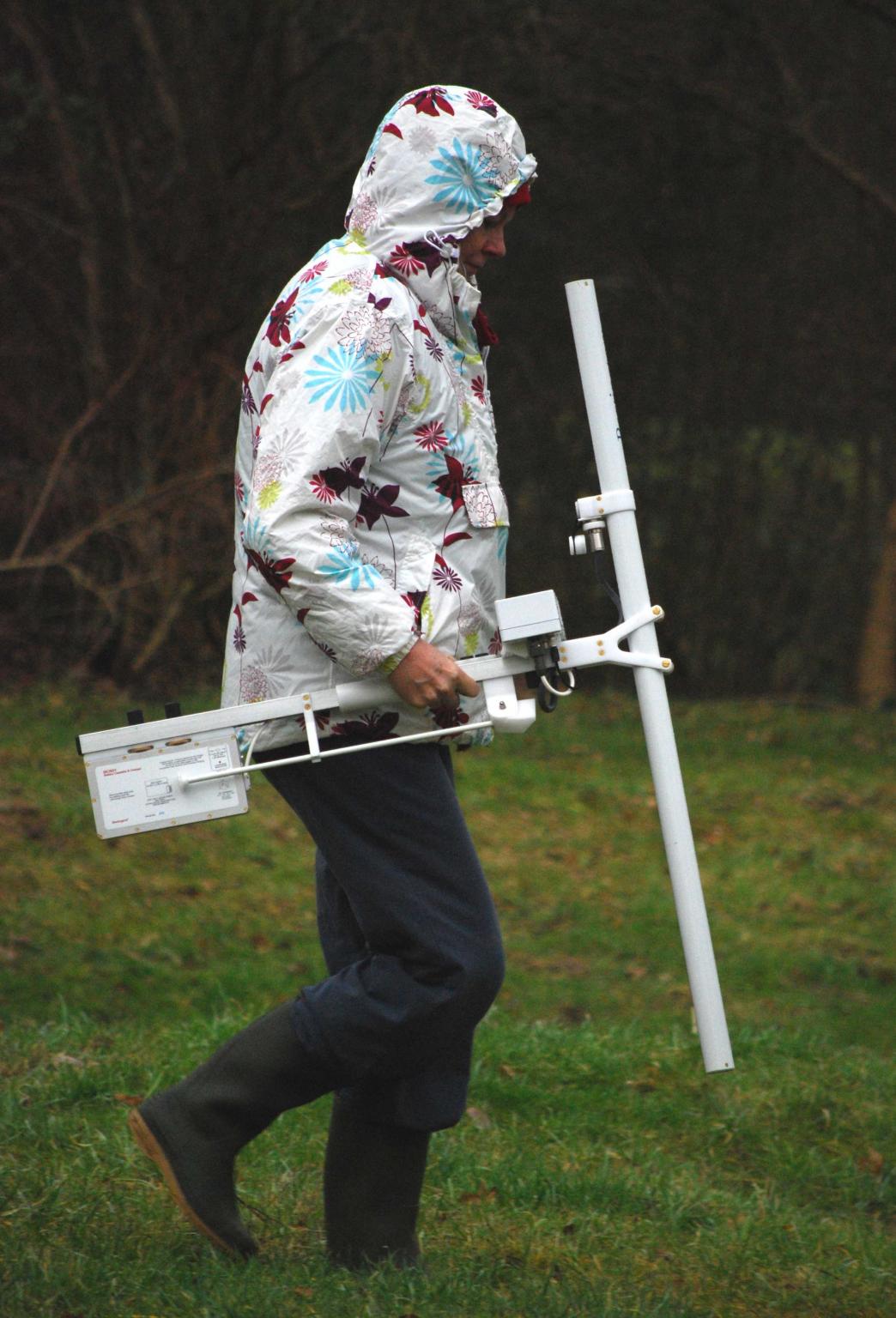Magnetometry
Soil is a complex build-up of material which is affected by many types of past activity. One of the most common is burning: this can take place for a variety of reasons – deliberately or accidentally; in one location or spread across an area of crop or woodland. Burning permanently changes the magnetic properties of the soil it has affected by altering the magnetism of tiny iron particles. When soil and stone is moved, ploughed, used for earthwork construction or ditch infill, patterns of activity emerge which can be traced by looking for variations in soil magnetism against the general background of the earth’s magnetic field. An area, line or feature in which the soil has a slightly different magnetic orientation to the surrounding earth can indicate the presence of sub-surface archaeology. Magnetometry can penetrate usually up to one to two metres in depth. Archaeological features show up as higher or lower readings: highly-burnt and rich dark deposits are often higher; stone walls usually lower. In some cases, the magnetic properties of the soil can be altered by bacterial action. This is most common in wet soil conditions, and therefore can also be useful archaeologically in locating old river channels, for example. Magnetometry only works when past activity has produced a measureable pattern of magnetic contrast. Graves, for example, rarely show up magnetically because they involve putting the same soil back into the hole very quickly after it was dug out (but cremations are of course a different matter). Magnetometry also not possible where there is non-archaeological magnetic contamination, such as metal fencing, ferrous (iron) refuse or traces of extensive modern burning. An instrument known as a ‘magnetometer’ is required to measure and map traces of soil magnetism. There are various types of magnetometer, ‘proton’ magnetometers w ere the first to be widely used, ‘fluxgate gradiometers’ are most common at present; the latest ‘caesium vapour’ magnetometers are now making an impact. The survey area is laid out in a regular grid, usually in 30 by 30 metre squares with each metre point marked on string lines. To avoid contaminating the readings, the surveyor must be free of magnetic materials, so watches, metal clothing fasteners and credit cards must be left away from the survey area.
ere the first to be widely used, ‘fluxgate gradiometers’ are most common at present; the latest ‘caesium vapour’ magnetometers are now making an impact. The survey area is laid out in a regular grid, usually in 30 by 30 metre squares with each metre point marked on string lines. To avoid contaminating the readings, the surveyor must be free of magnetic materials, so watches, metal clothing fasteners and credit cards must be left away from the survey area.
Taken usually at each metre or half-metre, the readings are then down-loaded from the magnetometer onto a computer and plotted using a special graphics programme. The results are plotted in squares representing the survey grid, in which variations and anomalies are usually represented by darker or lighter colours. When all the grid squares are joined together, they give a full area picture of patterns of magnetism, which can then be interpreted archaeologically.









